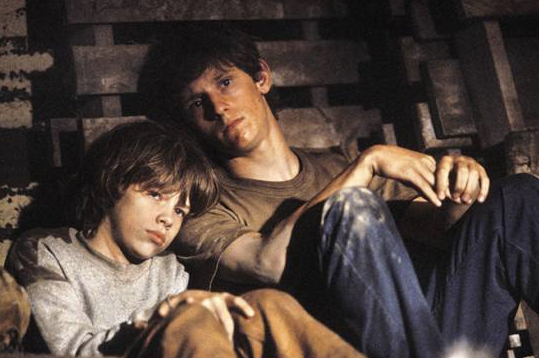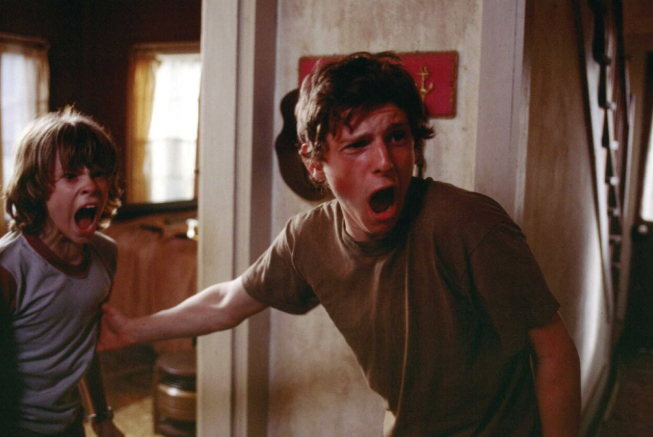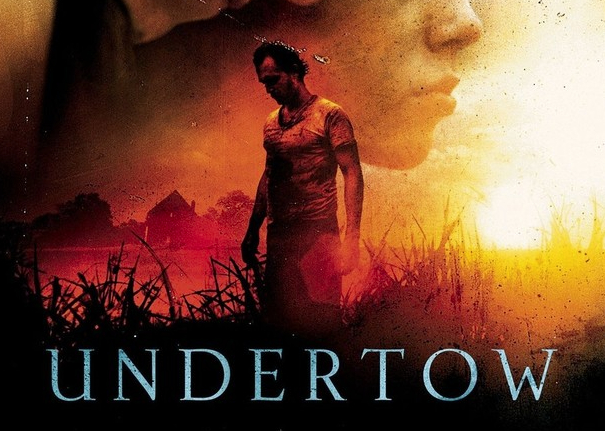Undertow (2004)
Released in 2004, Undertow is a haunting psychological thriller directed by David Gordon Green, who is known for his atmospheric and intimate approach to storytelling. This film stands as a prime example of Southern Gothic cinema, blending elements of psychological suspense, familial drama, and survival. With a story that is at once poignant and tense, Undertow explores the themes of loss, guilt, and the dark consequences of past actions. The film is set against the raw and untamed backdrop of rural Georgia, where nature and emotion intertwine to shape the characters’ fate.
Plot Overview: A Family in Crisis
At its heart, Undertow is a film about a broken family trying to find their way through a world filled with dangers—both external and internal. John Munn (Dermot Mulroney), a hardworking father, moves his two young sons, Chris (Jamie Bell) and Tim (Devon Alan), to a remote farmhouse in Georgia after the sudden death of his wife. The family struggles to adjust to their new, isolated life, raising pigs and dealing with their grief.
Their fragile peace is shattered when John’s estranged brother, Deel (Josh Lucas), reappears after spending time in prison. Deel’s return brings with it a sense of unease, as he is immediately portrayed as a volatile and unpredictable figure, driven by greed and a deep-seated resentment towards John. Deel’s intentions soon become clear: he is searching for a stash of gold coins that their father supposedly hid before his death.
The tension escalates as Deel becomes more aggressive in his quest for the gold. The strained family dynamic reaches its breaking point when Deel murders John in a violent confrontation. With their father dead and Deel now in pursuit of them, Chris and Tim are forced to flee their home, with the stolen gold coins in hand. The brothers’ journey becomes a desperate race for survival, as they navigate both the physical dangers of the wilderness and the psychological burden of their loss.
The Characters and Their Struggles
The true strength of Undertow lies in its well-developed characters, each of whom carries their own emotional baggage. At the center of the film is Chris, a young teenager on the cusp of manhood. Chris is forced to grow up quickly as he assumes the role of protector for his younger brother, Tim. As they journey through the wilderness, Chris’s inner turmoil and maturity are put to the test. His development as a character is a key focus of the film, as he grapples with the brutal reality of survival and the weight of his father’s death. Jamie Bell’s performance as Chris is a standout, capturing the inner conflict of a young boy trying to navigate a world that has suddenly turned hostile and unforgiving.
Tim, the younger brother, is a more enigmatic character. He exhibits odd behaviors, which suggest that his trauma may be deeper and more complex than Chris’s. Tim’s peculiarities add an unsettling layer to the film, as it becomes unclear whether his actions are driven by innocence or a darker, more mysterious force. Tim’s relationship with Chris serves as the emotional anchor for the film, and his actions often add a layer of unpredictability to the narrative.

Deel, played by Josh Lucas, is the film’s antagonist, embodying the corruptive force of greed and vengeance. Deel’s return to the family is not only a physical threat but a psychological one as well. He is a man shaped by the violence of his past, and his obsession with the gold coins leads him to cross increasingly violent lines. Lucas brings a chilling intensity to the role, making Deel a formidable and unpredictable presence throughout the film.
Themes of Family, Loss, and Survival
At its core, Undertow is a film about family and the consequences of betrayal. The Munn family is fractured by grief, loss, and unresolved tensions that stretch back years. John’s decision to move his sons to the secluded farmhouse in an attempt to escape the ghosts of the past is indicative of his failure to truly confront his emotional scars. Deel’s return forces the family to reckon with the darker side of their history, including long-buried grudges and unresolved issues.
The film also explores the theme of survival—not just physical survival in a harsh and unforgiving environment, but emotional survival as well. As Chris and Tim make their way through the wilderness, they must navigate not only the physical dangers posed by Deel but also the psychological toll of their father’s death and the trauma it causes. The film’s rural setting serves as a reflection of the characters’ emotional landscape: a harsh, desolate world where survival is a constant struggle, and every step forward is fraught with danger.

One of the key aspects of the film’s Southern Gothic influence is its exploration of nature as both a literal and symbolic force. The wilderness, with its untamed beauty and hidden dangers, mirrors the inner turmoil of the characters. The wild landscapes are often shot with a sense of foreboding, as if nature itself is complicit in the brothers’ journey. The film’s cinematography, executed by Tim Orr, uses the landscape to create a sense of isolation and vulnerability, enhancing the emotional depth of the story.
Atmosphere and Cinematography
David Gordon Green’s direction is essential to the film’s success, as he carefully balances character development with atmospheric tension. His use of pacing is deliberate, allowing for moments of quiet reflection and introspection, which heighten the emotional stakes. The slow-burning tension gradually builds throughout the film, culminating in a tense and emotionally charged final act.
The cinematography, captured by Tim Orr, is stunning. The vast, open landscapes of Georgia are juxtaposed with the intimate, often claustrophobic moments between the characters. The film’s use of natural light and wide shots emphasizes the isolation of the characters and their struggle against both the physical and emotional elements. Green’s ability to capture the beauty and menace of the Southern countryside adds another layer of depth to the film, making the setting itself a key character in the story.

Critical Reception and Legacy
Undertow received a mixed-to-positive response from critics. While some praised the film for its atmospheric direction, strong performances, and emotional depth, others felt that the pacing was slow and the film’s tone too understated for mainstream audiences. The film holds a 54% approval rating on Rotten Tomatoes, with critics noting its potential but acknowledging that it may not appeal to all viewers due to its deliberate pace and somber mood.
Despite its mixed reception, Undertow has found a cult following, particularly among fans of Southern Gothic cinema and those who appreciate character-driven narratives. The film’s exploration of family dynamics, survival, and the human cost of betrayal has earned it a place as a poignant, if understated, psychological thriller.
Conclusion
Undertow is a beautifully crafted, emotionally complex film that blends the quiet intensity of Southern Gothic storytelling with psychological suspense. Its exploration of family, loss, and survival, set against the backdrop of a stark, unforgiving rural landscape, offers a unique and thought-provoking cinematic experience. While it may not be for everyone, those who appreciate slow-burn thrillers and character-driven narratives will find Undertow to be a deeply engaging and resonant film. It’s a journey into the heart of darkness—both external and internal—and a story of resilience in the face of profound loss.
